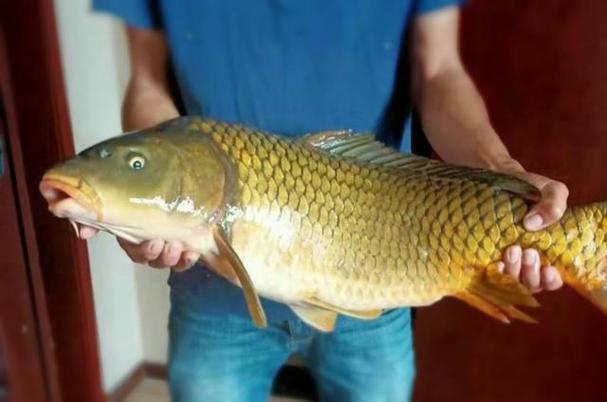Carp, as a common freshwater fish, its characteristics and information can be summarized as follows:
Basic Characteristics: Carp belongs to the genus Carp, family Carpidae, freshwater fishes.
The body is elongated, laterally compressed, with a rounded abdomen and a small head.
The color of the back of the body is grayish-black or yellowish-brown, the side of the body is tinged with golden yellow, and the abdomen is grayish-white.
The dorsal and caudal fins are blackish at the base, the lower lobe of the caudal fin is red, and the even and anal fins are light red.
Distribution range:
Africa: Angola, Burundi, Cameroon, Central African Republic, Côte d'Ivoire, Egypt, Eswatini, Ethiopia, Ghana, Kenya, Lesotho, Madagascar, Malawi, Mauritius, Morocco, Mozambique, Namibia, Nigeria, Reunion Island, Rwanda, South Africa, Sudan, Tanzania, Togo, Tunisia, Uganda, Zambia, Zimbabwe.
Asia: Afghanistan, Armenia, Azerbaijan, Bangladesh, Bhutan, Brunei, Cambodia, China, Georgia, India (Orissa, Tamil Nadu), Indonesia, Iran, Iraq, Israel, Japan, Jordan, Kazakhstan, Kyrgyzstan, Laos, Malaysia, Myanmar, Nepal, Pakistan, Philippines, Saudi Arabia, Singapore, South Korea, Sri Lanka, Syria, Tajikistan, Thailand, Turkey, Turkmenistan, Uzbekistan, Vietnam.
Europe: Austria, Belarus, Belgium, Bosnia and Herzegovina, Bulgaria, Croatia, Cyprus, Czech Republic, Slovakia, Denmark, Estonia, Finland, France, Germany, Greece, Hungary, Ireland, Italy, Latvia, Liechtenstein, Lithuania, Luxembourg, Netherlands, North Macedonia, Norway, Poland, Portugal, Romania, Russia, Serbia and Montenegro, Slovenia, Spain, Sweden, Switzerland, Ukraine, UK.
North America: Canada, Costa Rica, Cuba, Dominican Republic, El Salvador, Guatemala, Haiti, Honduras, Jamaica, Mexico, Nicaragua, Panama, Puerto Rico, United States.
Oceania: Australia, Fiji, Guam, New Zealand, Papua New Guinea.
Habitat:
Inhabits the middle and lower reaches of rivers, lakes and marshes, reservoirs and other waters with static currents, especially preferring nutrient-rich, bottom or aquatic grass-rich waters. Carp for freshwater fish in the lower layer, omnivorous, especially prefer nutrient-rich, bottom or grassy waters on the survival of the environment is very adaptable, gentle temperament, lively and good jumping, vitality, both cold and hypoxia, but also more resistant to salinity, less than 7 grams / liter of brackish water to grow well, the optimal salinity of 1 to 4 grams / liter. The optimal water temperature is between 20 to 32℃, and the optimal water temperature for reproduction is 22 to 28℃. The most suitable pH value for growth is 7.5-8.5. Carp is an omnivorous fish, and the young fish mainly feed on rotifers, crustaceans and small invertebrates, etc. As the individual grows, it gradually takes in more and more invertebrates. With the increase of individuals, they gradually feed on small benthic invertebrates; adult fish mainly feed on snails, mussels, clam mollusks and larvae of aquatic insects, small fish, shrimp, etc., and also eat some filamentous algae, aquatic grasses, plant debris, and artificial feed, etc. With the increase of water temperature, the fish will feed on small invertebrates, and then feed on small invertebrates. As the water temperature rises, the amount of food intake increases, entering the reproductive season, stop feeding. After reproduction is the peak feeding season, winter feeding intensity is weak, or even no feeding.
Carp is highly adaptable, cold-resistant, alkali-resistant, hypoxia-resistant, and can live in a variety of adverse environments.
Carp is an omnivorous fish, feeding on algae, aquatic plants, snails, mussels and larvae of aquatic insects.
Breeding habits: carp spawning period varies from region to region, generally from April to May, the latest can be as late as June spawning, eggs sticky. Carp have a long lifespan, some individuals can live for decades.
Resource status:
Due to the pollution of water quality in rivers and lakes, coupled with problems such as the breaking of the Yellow River, there is a declining trend in carp resources.
It is included in the IUCN Red List of Threatened Species (IUCN) as Vulnerable (VU).
Cultivation and Economic Value: Carp is characterized by strong resistance, wide distribution, easy cultivation, low cultivation cost and easy processing.
Carp is nutritious and rich in protein and nutritional elements, and the market demand is always high.
The above are some basic characteristics and related information about carp, covering the biological characteristics, distribution, living habits, breeding habits, cultural significance, resource status, as well as culture and economic value of carp.










